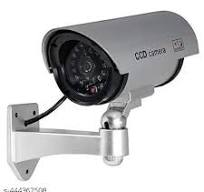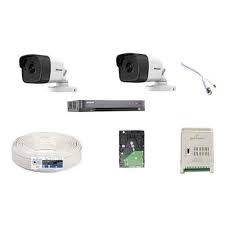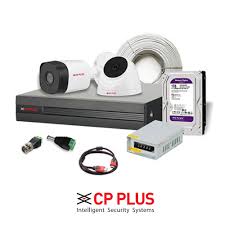Networking Solutions: Enhancing Connectivity and Collaboration
In today’s interconnected world, networking solutions play a crucial role in facilitating seamless communication and collaboration among individuals, businesses, and organizations. Whether it’s a small office or a large enterprise, having a robust and reliable network infrastructure is essential for efficient operations and staying competitive in the digital age.
Networking solutions encompass a wide range of technologies and services designed to connect devices, share resources, and enable data exchange. From local area networks (LANs) within an office building to wide area networks (WANs) connecting multiple locations across different geographical regions, networking solutions provide the backbone for information sharing and resource utilization.
One of the primary benefits of implementing networking solutions is the ability to enhance connectivity. Through wired or wireless connections, devices can communicate with each other, enabling seamless data transfer and access to shared resources such as printers, servers, and storage systems. This connectivity empowers employees to collaborate effectively, share information in real-time, and work together towards common goals.
Moreover, networking solutions enable businesses to streamline their operations by centralizing their IT infrastructure. With the help of network servers and cloud-based services, organizations can consolidate their data storage, software applications, and security measures into a centralized system. This not only simplifies management but also enhances data security by implementing robust firewalls, encryption protocols, and user access controls.
Networking solutions also facilitate efficient remote access capabilities. With the increasing trend of remote workforces and flexible working arrangements, having secure remote access to company resources has become more important than ever before. Virtual private networks (VPNs) allow employees to securely connect to their organization’s network from anywhere in the world while ensuring data confidentiality.
In addition to internal connectivity within an organization’s premises or between branch offices, networking solutions enable external connectivity to the internet. Internet service providers (ISPs) offer various options such as broadband connections or dedicated leased lines that provide high-speed internet access for businesses. This connectivity opens doors to a vast array of online services, cloud-based applications, and global communication platforms that empower organizations to expand their reach and explore new opportunities.
Networking solutions also play a critical role in supporting emerging technologies such as the Internet of Things (IoT) and edge computing. As more devices become interconnected, networking infrastructure needs to be scalable and capable of handling the increasing volume of data generated by these devices. Additionally, edge computing relies on local networks to process data closer to its source, reducing latency and improving response times.
In conclusion, networking solutions are indispensable in today’s digital landscape. They enable seamless connectivity, enhance collaboration, streamline operations, ensure data security, facilitate remote access, and support emerging technologies. By investing in robust networking infrastructure and partnering with experienced providers, businesses can not only stay connected but also unlock new possibilities for growth and innovation.
Commonly Asked Questions About Networking Solutions
- What are examples of networking solutions?
- Who is the CEO of Network Solutions?
- Which networking solution is best?
- What is meant by networking solutions?
What are examples of networking solutions?
There are several examples of networking solutions that businesses and organizations can implement to enhance their connectivity and collaboration. Some common examples include:
- Local Area Networks (LANs): LANs connect devices within a limited area, such as an office building or campus, allowing users to share resources and communicate effectively.
- Wide Area Networks (WANs): WANs connect multiple LANs across different geographical locations, enabling seamless communication and data transfer between offices or branches.
- Virtual Private Networks (VPNs): VPNs provide secure remote access to an organization’s network over the internet, allowing employees to connect securely from outside the office.
- Wireless Networks: Wireless networks utilize Wi-Fi technology to enable wireless connectivity within a specific area, providing flexibility and mobility for users.
- Cloud Networking: Cloud networking solutions leverage cloud-based infrastructure to provide scalable and flexible networking capabilities, allowing organizations to access resources and services from anywhere.
- Software-Defined Networking (SDN): SDN separates the control plane from the data plane in network architecture, enabling centralized management and programmability of network devices for enhanced flexibility and agility.
- Network Security Solutions: Network security solutions encompass various technologies such as firewalls, intrusion detection systems (IDS), virtual private networks (VPNs), and authentication protocols to protect networks from unauthorized access and cyber threats.
- Unified Communications: Unified Communications solutions integrate various communication channels such as voice, video, instant messaging, email, and collaboration tools into a single platform for seamless communication and collaboration.
- Network Monitoring and Management Tools: Network monitoring tools provide real-time visibility into network performance, troubleshooting capabilities, and proactive management of network infrastructure.
- Internet of Things (IoT) Networking: IoT networking solutions enable connectivity between numerous devices or sensors through protocols like Zigbee or Bluetooth Low Energy (BLE), facilitating data exchange for smart home automation or industrial applications.
These are just a few examples of networking solutions available in the market. The choice of networking solutions depends on the specific needs and requirements of each organization.
Who is the CEO of Network Solutions?
The CEO of Network Solutions is Roy Dunbar.
Which networking solution is best?
Determining the best networking solution depends on various factors such as the specific needs and requirements of your organization, budget constraints, scalability, and future growth plans. Here are a few popular networking solutions that cater to different needs:
- Ethernet: Ethernet is a widely used networking solution that provides high-speed wired connections within a local area network (LAN). It offers reliable and secure connectivity for businesses of all sizes.
- Wi-Fi: Wi-Fi is a wireless networking solution that enables devices to connect to a network without the need for physical cables. It provides flexibility and mobility within an office or campus environment.
- Virtual Private Network (VPN): VPNs offer secure remote access to an organization’s network over the internet. They encrypt data transmissions, ensuring confidentiality and enabling employees to work remotely while maintaining a secure connection.
- Software-Defined Networking (SDN): SDN is an innovative approach that separates the control plane from the data plane in network architecture. It provides centralized management, flexibility, and scalability by virtualizing network resources.
- Cloud Networking: Cloud-based networking solutions leverage cloud computing technology to provide scalable and flexible networking infrastructure. They offer benefits such as reduced hardware costs, simplified management, and easy scalability.
- Wide Area Networks (WAN): WANs connect multiple locations across different geographical regions using various technologies like leased lines or virtual private networks (VPNs). WANs are suitable for organizations with multiple branch offices or remote locations.
- Network Security Solutions: Network security solutions focus on protecting networks from unauthorized access, data breaches, malware attacks, and other threats. They include firewalls, intrusion detection systems (IDS), virtual private networks (VPNs), and other security measures.
It’s important to evaluate your organization’s specific requirements and consult with IT professionals or experts in the field to determine which networking solution best fits your needs. Consider factors such as budget limitations, scalability requirements, security concerns, and future growth plans to make an informed decision.
What is meant by networking solutions?
Networking solutions refer to a range of technologies, services, and strategies designed to establish and manage computer networks. These solutions aim to facilitate seamless communication and data exchange between devices, both within an organization’s premises and across different locations. Networking solutions encompass various components, such as hardware devices (routers, switches, modems), software applications (network management tools), protocols (TCP/IP), and services (network security, cloud networking). These solutions enable organizations to establish reliable and efficient network infrastructures that support connectivity, collaboration, resource sharing, and information exchange among users and devices. Whether it’s a local area network (LAN) within a single office or a wide area network (WAN) connecting multiple sites globally, networking solutions play a crucial role in enabling smooth operations and supporting the digital connectivity requirements of modern businesses.




